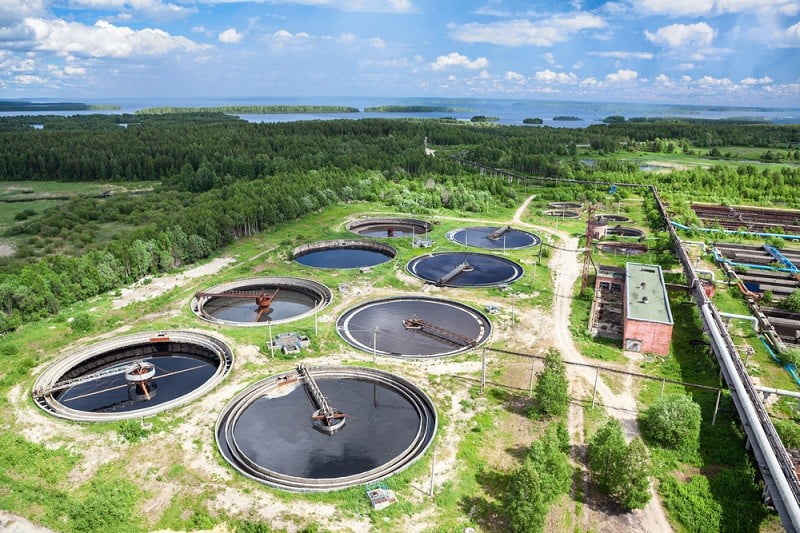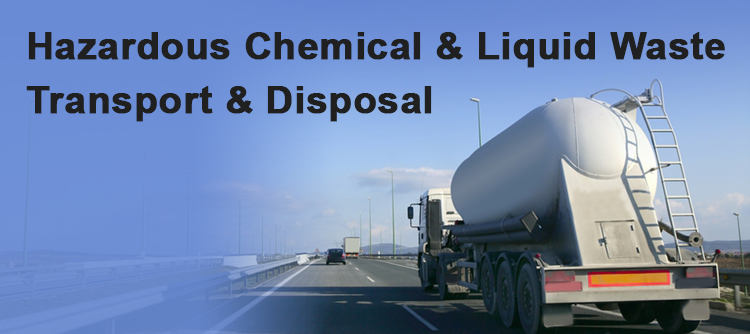Exactly How Liquid Waste Disposal Works: A Detailed Overview of Strategies and Technologies Used

Overview of Fluid Waste Types
The complexity of fluid waste kinds demands a complete understanding of their qualities and implications for disposal. Liquid waste can generally be classified right into a number of types, consisting of industrial, local, farming, and contaminated materials. Each classification exhibits distinct properties, needing certain management techniques to reduce ecological and health dangers.
Industrial liquid waste originates from manufacturing processes and usually consists of a range of pollutants, such as hefty metals, solvents, and organic compounds. Municipal liquid waste, largely comprising wastewater from households and commercial establishments, includes raw material, nutrients, and virus (industrial wastewater treatment). Agricultural liquid waste, consisting of runoff from farms, might have fertilizers, pesticides, and animal waste, presenting threats to water quality and environments
Dangerous fluid waste is characterized by its poisoning, sensitivity, or potential to cause injury. Understanding these diverse liquid waste kinds is essential for establishing reliable disposal approaches and ensuring conformity with ecological regulations.
Physical Therapy Approaches

Testing is the preliminary action, where bigger bits and particles are removed from the fluid waste making use of displays or grates. This process safeguards downstream equipment from damage and makes certain smoother procedure. Complying with testing, sedimentation uses gravitational force to different solids from fluids. In sedimentation containers, heavier fragments settle at the bottom, creating a sludge layer, while the cleared up liquid can be further treated.
Filtering is an additional essential approach that involves passing the fluid through permeable materials, such as sand or membrane layers, to catch smaller sized particles. This step boosts the quality of the liquid, making it appropriate for subsequent therapy procedures.

Chemical Therapy Techniques
Chemical therapy methods are important for effectively taking care of fluid waste, particularly in addressing dissolved and colloidal contaminants that physical techniques might not adequately remove. These methods use various chemical representatives to counteract, speed up, or change dangerous compounds into much less dangerous forms.
One typical approach is coagulation and flocculation, where chemicals such as alum or ferric chloride are included to promote the gathering of put on hold bits. This procedure boosts sedimentation, permitting for easier elimination of the resulting sludge. Furthermore, oxidation procedures, employing agents like chlorine or ozone, my review here are employed to break down complex organic substances and virus, rendering the waste safer for discharge or further treatment.
Neutralization is one more critical technique, which readjusts the pH of acidic or alkaline waste streams to neutral levels, preventing company website potential harm to downstream systems and the environment. Furthermore, advanced oxidation procedures (AOPs) make use of mixes of oxidants and ultraviolet light to weaken persistent contaminants, attaining a higher degree of therapy efficiency.
Biological Therapy Procedures
Biological therapy procedures play an essential duty in the monitoring of liquid waste by using bacteria to break down raw material and decrease contaminant levels. These procedures can be generally classified into anaerobic and cardiovascular treatments, each utilizing certain microbial communities to accomplish effective waste deterioration.
Aerobic treatment entails the use of oxygen to assist in the malfunction of organic materials by bacteria. This procedure is typically implemented in activated sludge systems, where oygenation tanks give a favorable setting for microbial growth, resulting in the oxidation of natural contaminants. The resultant biomass can be divided from treated effluent with sedimentation.
In contrast, anaerobic treatment occurs in the lack of oxygen, depending on various germs to damage down raw material. This technique is especially useful for high-strength waste, as it creates biogas, a renewable resource resource, while lowering sludge production. Technologies such as anaerobic digesters are regularly utilized in industrial and local applications.
Both aerobic and read the article anaerobic biological treatments not just decrease the ecological effect of fluid waste but likewise help with resource healing, making them vital elements of lasting waste administration techniques. Their effectiveness, flexibility, and effectiveness sustain their extensive implementation throughout numerous sectors.
Arising Technologies in Disposal
Ingenious techniques to fluid garbage disposal are rapidly developing, driven by improvements in technology and a raising emphasis on sustainability. Among these arising technologies, membrane layer bioreactors (MBRs) have actually gained grip for their capacity to incorporate organic therapy with membrane layer filtration, leading to top quality effluent that can be reused in various applications. MBRs make it possible for smaller impacts and much more effective operations compared to typical systems.
Another appealing development is the usage of anaerobic food digestion integrated with nutrient recovery innovations, which not just deals with fluid waste however likewise produces biogas and recovers valuable nutrients like nitrogen and phosphorus. This dual benefit improves source efficiency and reduces environmental effect.
Additionally, advanced oxidation procedures (AOPs) are being adopted for the destruction of complex organic toxins. These techniques utilize powerful oxidants and drivers to damage down impurities at the molecular degree, offering a very reliable service for tough waste streams.
Furthermore, the combination of expert system and artificial intelligence in waste management systems is optimizing functional effectiveness and predictive upkeep, leading to decreased expenses and improved environmental conformity. These technologies show a considerable shift in the direction of more sustainable and reliable liquid waste disposal practices.
Verdict
To conclude, reliable liquid garbage disposal necessitates an extensive understanding of various methods and innovations. The combination of physical, chemical, and biological treatment methods makes sure the effective monitoring of diverse waste kinds. Furthermore, the appearance of ingenious modern technologies boosts treatment effectiveness and promotes sustainability in waste management techniques. By constantly advancing these methodologies, it ends up being possible to attend to the growing obstacles connected with liquid waste, ultimately adding to environmental defense and source healing.
Fluid waste disposal is a critical element of ecological management, needing a detailed understanding of different methods and modern technologies tailored to different waste kinds. Liquid waste can extensively be categorized right into a number of kinds, including commercial, municipal, farming, and dangerous waste. Agricultural liquid waste, including overflow from ranches, may consist of fertilizers, pesticides, and pet waste, posturing threats to water high quality and communities.
Various physical therapy approaches play a critical duty in handling liquid waste properly - industrial wastewater treatment.In final thought, efficient liquid waste disposal necessitates a comprehensive understanding of different techniques and modern technologies